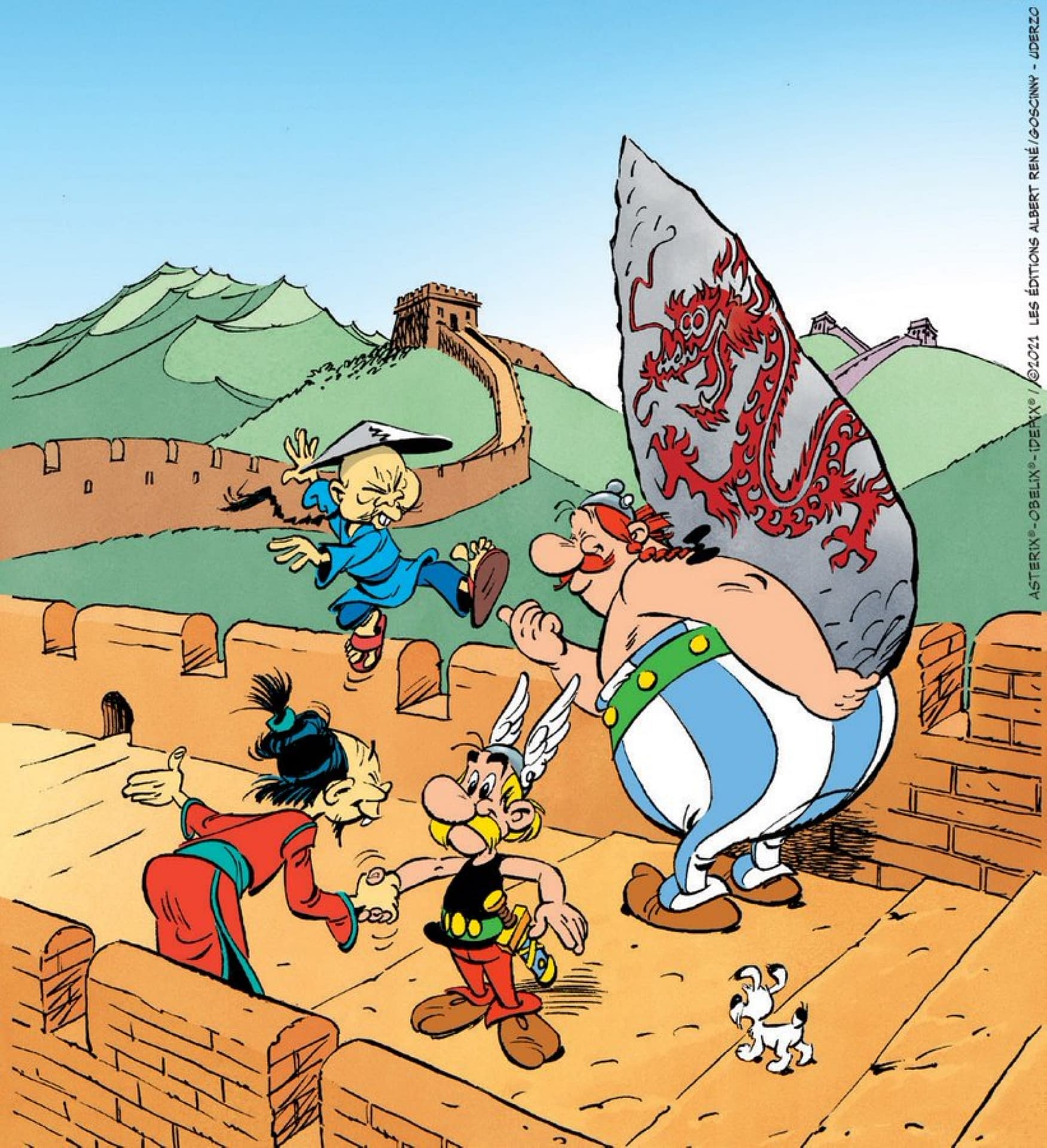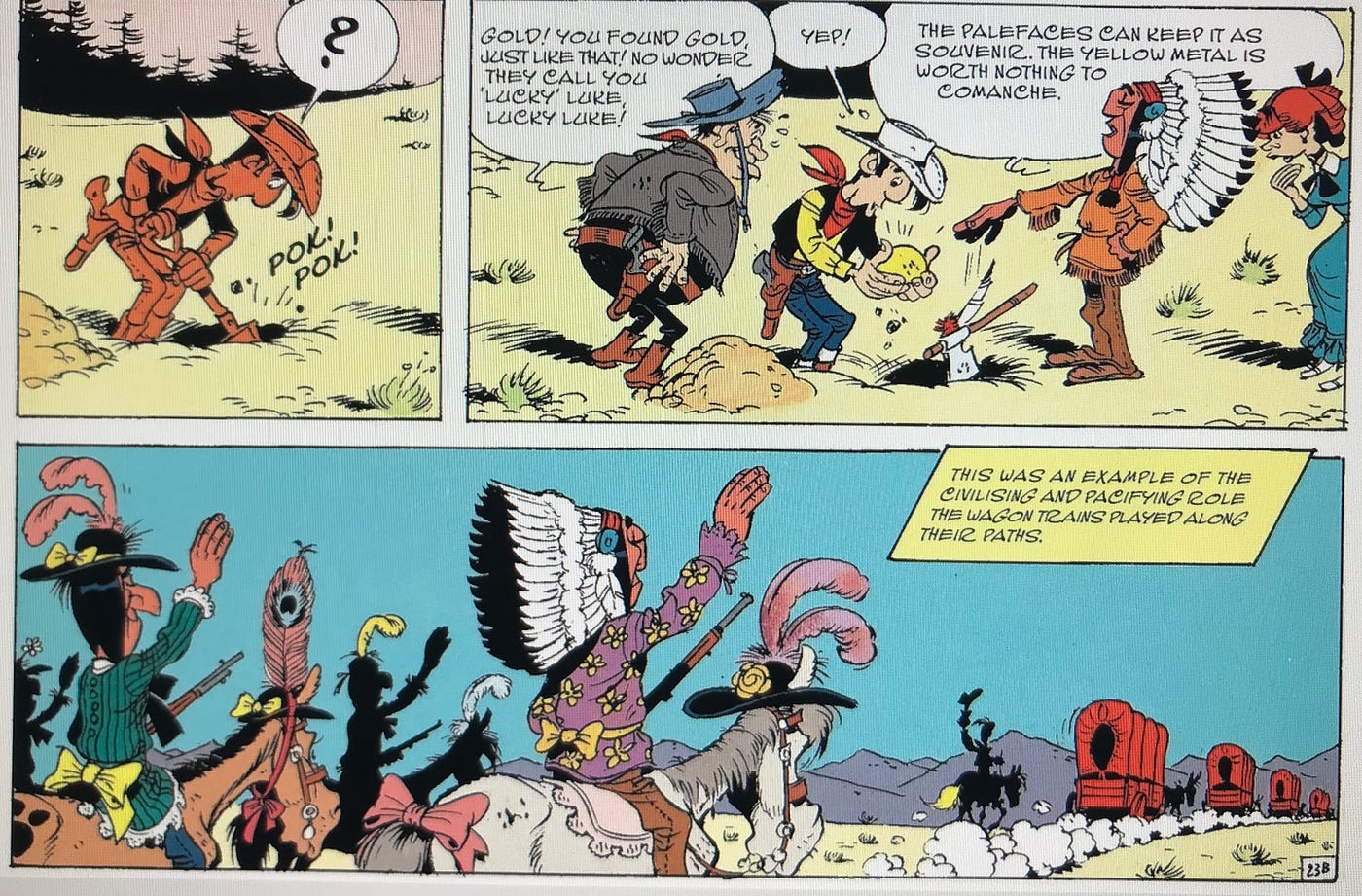Honoring the author.
None of this thread is against Bruce Heard as a person. I've conversed with him several times over the years, and he's a fine person.
I am able to empathize and work myself into the perspective of the time, while at the same time firmly holding the problematic facets up to the light of examination.
I'd offer a few contextual speculations. I may be mistaken about some or all of these; but these are points I consider when empathizing:
1) The author was raised in continental Europe, and English is not the author's native language—it's a learned language. And in certain European languages, the terms "red man" and "yellow man" may have lingered as "acceptable" terms longer than in the English language. (I'd appreciate if knowledgeable French speakers in the ENWorld community could affirm or dis-affirm that.)
2) The author is of the Baby Boomer generation who, probably even in Europe, were raised on American Western films. Films which were pervaded with the stereotypical "cowboys and Indians" trope.
3) After having met Gary Gygax during a business trip to France, the author was hired by TSR. Moving to Wisconsin, U.S.A. as an adult in the mid-1980s, the European-born author may have missed some cultural nuances. Such as the revisionist trend seen in the film
Little Big Man (1970). And other cultural subtleties and implications.
4) In an earlier post, one ENWorlder referred to GAZ10 as "Garbage Pail Kids." Note: the
Garbage Pail Kids came out in 1985, in the same era as GAZ10. Others have mentioned "Looney Toons." I feel both of those are spot on. GAZ10 has a "gross" Garbage Pail Kids vibe, plus a zany Looney Toons vibe...plus (unfortunately) Looney Toons' 1940s racial stereotypes. Even Garbage Pail Kids (probably) stayed away from racial stereotypes.
5) The author was "all about humor," with no other inspiration. He states in an interview:
"There was no specific source of inspiration [for GAZ10] other than my decision to show the “monster’s” point of view with some humor." However, an unloosed continental European sense of humor may be somewhat different than the North American sense of humor.
6) The author was in a position which may not have provided the critical feedback which this product deserved. AFAIK, the author was, at that time, Product Manager for the entire Basic D&D line, which was equivalent to the entire AD&D product line. AD&D and BD&D were kept as distinct brands, product lines, and departments due to the fact that TSR tallied the Dave Arneson royalties differently in each of the two lines. So, since the author was also his own Product Manager, he may not have received necessary feedback from his team-members who were beneath him in the business hierarchy.
7) The book was rushed. See comments from the author:
"Unfortunately, no time was left at all to try out RPG optional developments. I had to shoot from the hip for much of this."
These points do not excuse anything. I just want to try to paint a full picture, in appreciation for the author's humanity.
P.S. Here are the author's full comments on GAZ10, from
an interview conducted by "Random Wizard" several years ago:
RW: In 1988, GAZ 10 The Orcs of Thar was released. This Gazetteer was unique in that it was presented from the humanoid monsters perspective. It provided rules for playing Orcs, Kobolds, Trolls, etc... Did you do much playtesting of the rules? The rules seem to encourage a fun and carefree style (and are quite imaginative). Were there any sources of inspiration for putting together this Gazetteer? Was there a reason you tackled this Gazetteer instead of handing it off to someone else?
BH: There was a lot of playtest for the boardgame insert. GAZ10 indeed had a lot of crunch to it. There was no specific source of inspiration other than my decision to show the “monster’s” point of view with some humor. It had been a while since I’d designed GAZ3, and the Known World’s real estate was going away fast! That was the motivation for fishing GAZ10 out of the mix and having some fun with it.








